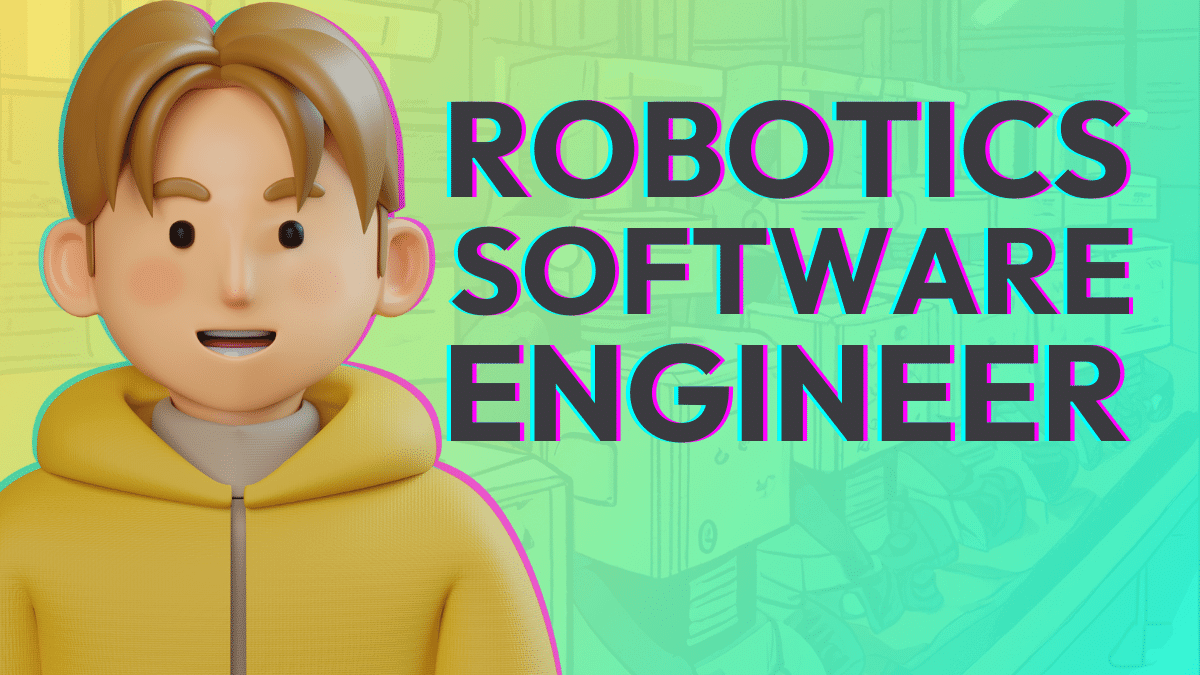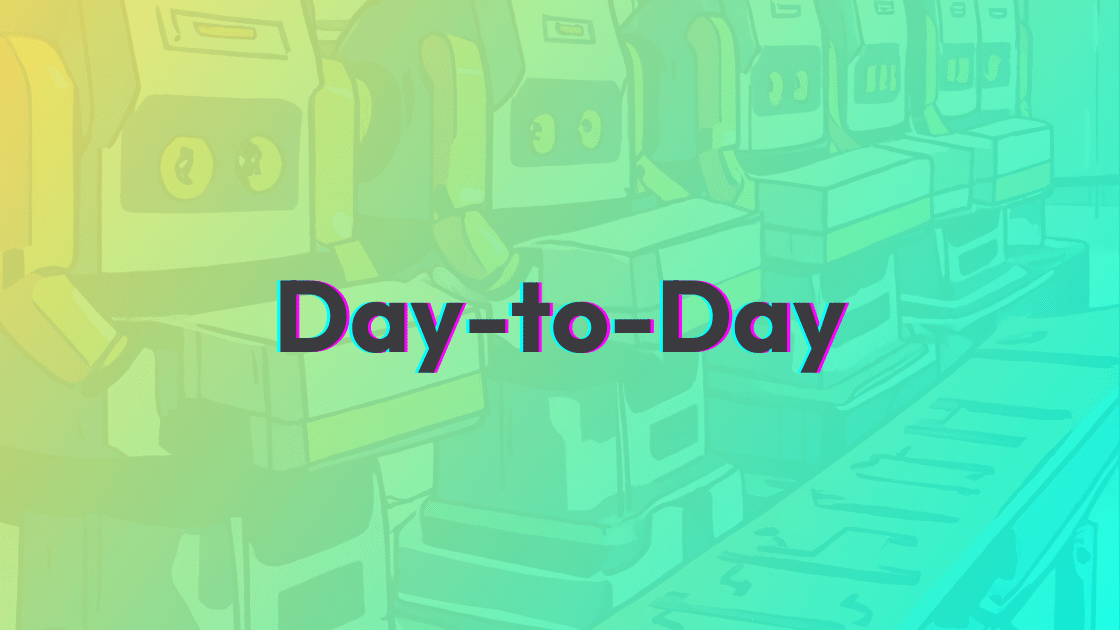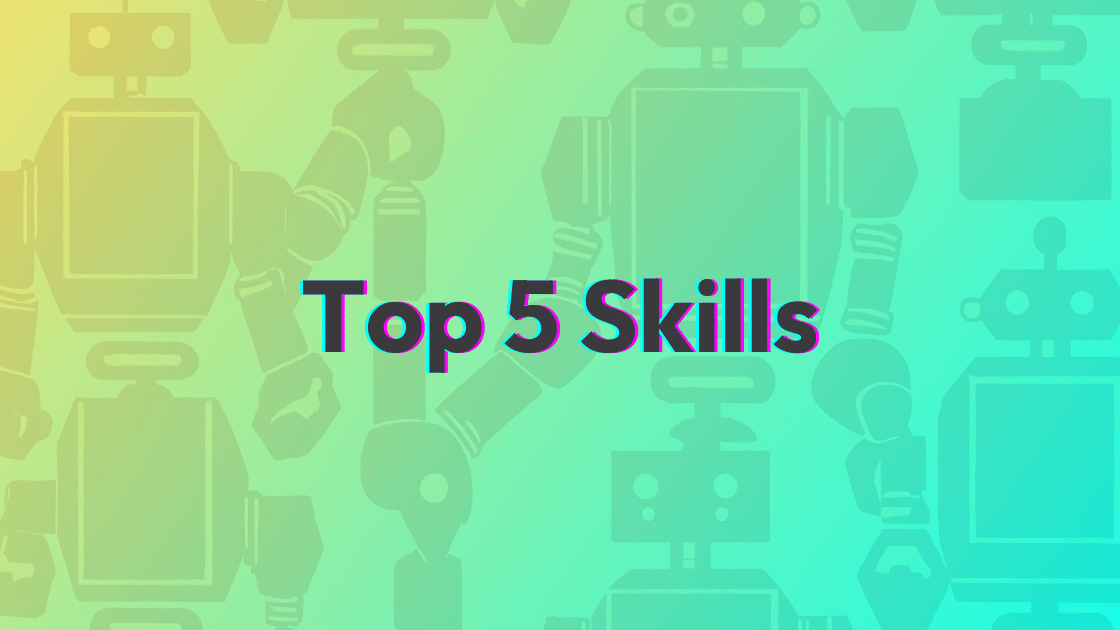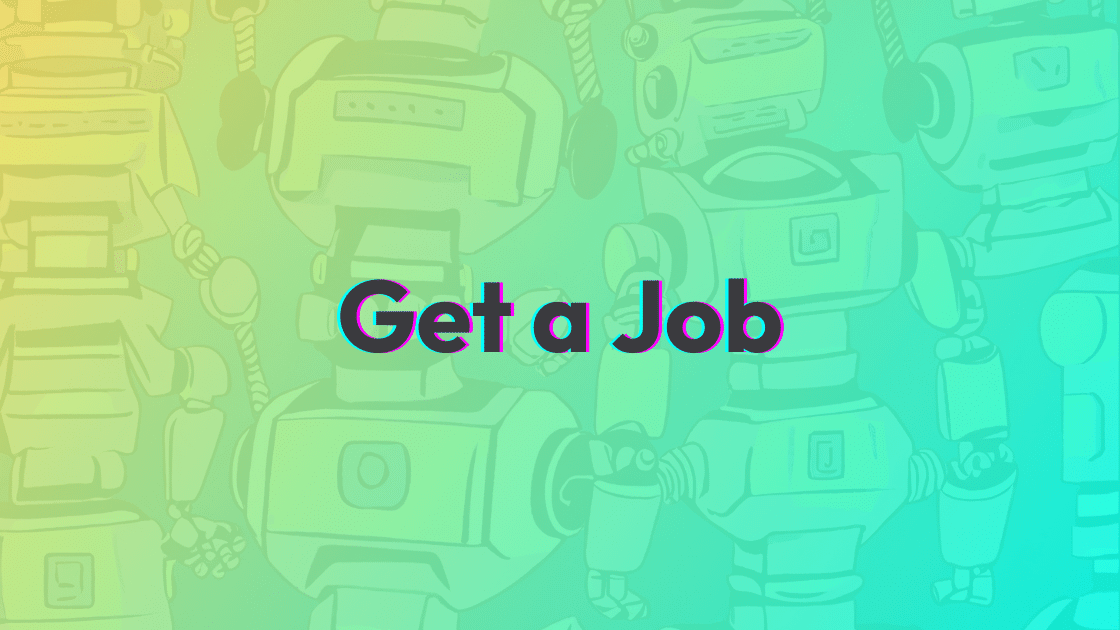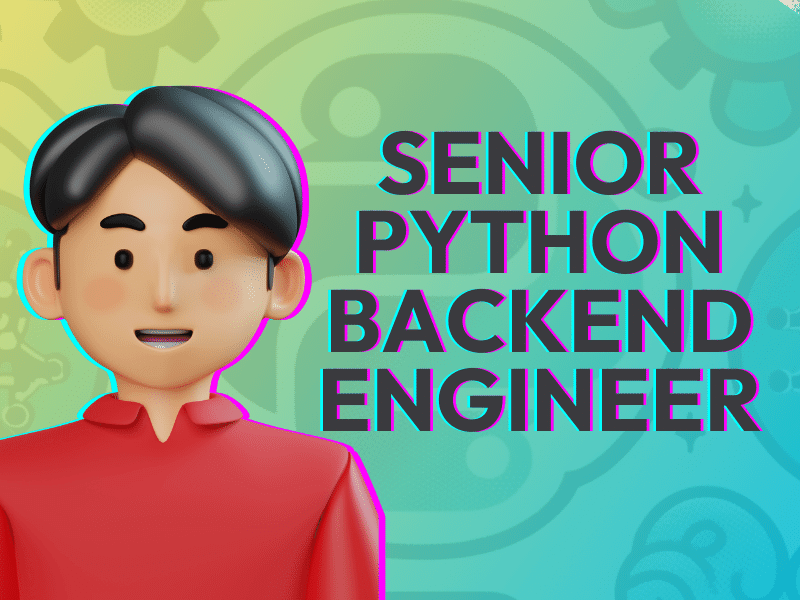Robotics Software Engineer: Everything You Need to Know
Today we are talking robots.
As a fan of the giant Gundam in Yokohama, and all things robotic, I was excited to learn more about what the role of Robotics Software engineer is all about.
So I went to the robotics recruiter, Arjab Dhakal, who goes by Ari.
Ari works with robotics clients here in the land known for its obsession with robots, Japan.
He walked me through everything you need to know to help you get a job in the unique, and sometimes dangerous, field of robotics software engineering.
There’s a lot to cover, so let’s get started.
What is a Robotics Software Engineer?
As a Robotics Software Engineer, you are developing the software that enables robots to function.
You will use programming languages such as C++ and Python, and robotics-specific frameworks like ROS (Robot Operating System) and ROS2. Using these tools, you create the software that allows robots to perform tasks autonomously or semi-autonomously.
You code for anything from autonomous vehicles to industrial robots and even space-faring robots used by NASA.
You will be crafting solutions for systems that are integral in today's tech-dependent society.
You collaborate daily with a multidisciplinary team of mechanical and electrical engineers to ensure the robot will execute the desired functions with precision and efficiency.
Two types of Robotics Software need engineering, let’s talk about the responsibilities of each.
The 2 Types of Robotics Software Engineers
In Robotics Software Engineering, two major roles exist – Robotics Systems Engineers and Robotics Perception Engineers.
1. Robotics Systems Engineers:
As a Robotics Systems Engineer, you orchestrate the symphony of code, hardware, and software that culminates in a functioning robot.
You ensure each system communicates effectively, the hardware performs optimally, and the system is maintained throughout future updates.
Your responsibilities will be:
System Architecture Design: Crafting the blueprint that guides the development and integration of various robotic systems.
Integration: Melding software with hardware, ensuring each component interacts flawlessly with the others.
Troubleshooting and Optimization: Identifying system bottlenecks, rectifying flaws, and continually refining system performance.
Collaboration: Working alongside hardware engineers, software developers, and other stakeholders to ensure the robotic system’s holistic success.
2. Robotics Perception Engineers:
As a Robotics Perception Engineer, you work in the realm of robot cognition.
Your role is to empower robots with the ability to interpret the things they see and interact with their environment.
The code you write will be the lens through which robots perceive the world.
Your responsibilities will be:
Perception Algorithm Development: Creating and refining algorithms that process sensory data, enabling robots to ‘perceive’ their surroundings.
Data Processing: Harnessing data from sensors like Lidars, translating raw data into actionable insights for the robot.
Real-Time Perception Components: Developing advanced real-time components that process and interpret sensory data, enabling real-time interactions with the environment.
Collaboration: Engaging with systems engineers and other team members to integrate perception components seamlessly into the broader robotic system.
Both roles complement the other, and in either, you will be interacting with the other. This is the essence of interdisciplinary collaboration that is at the heart of Robotics Software Engineering.
Let’s look at a typical day as a Robotics Software Engineer.
A Day in the Life
Morning:
8:00 AM – Arrival and Setup: As you arrive at your workspace, the first task is to boot up your systems, check any overnight updates from your team, and prepare for the day ahead.
8:30 AM – Morning Stand-up Meeting: A quick check-in with your team where everyone shares their progress from the previous day and outlines their focus for the day ahead. It’s a time for synchronizing, identifying any blockers, and offering support where needed.
Late Morning:
9:00 AM – Coding and Development: Post meeting, you delve into the core of your role – coding. You work on developing and optimizing the software that powers the robots, ensuring it aligns with the project goals.
11:00 AM – Collaboration: Whether it’s a scheduled meeting or an impromptu discussion, collaborating with fellow engineers, hardware experts, and other team members is crucial to aligning your work and addressing any emerging challenges.
Afternoon:
1:00 PM – Lunch and Networking: A time to refuel and engage with colleagues, share insights, or discuss emerging technologies in the robotics domain.
2:00 PM – Testing and Troubleshooting: Post lunch, you dedicate time to testing the software, identifying bugs, and troubleshooting issues. It’s about ensuring the software’s readiness for integration.
Late Afternoon:
4:00 PM – Field Testing and Interaction: Some days may require you to step into the field, where you get to interact with the robots, see your code in action, and identify any real-world issues that need addressing.
5:00 PM – Documentation and Planning: Documenting your day’s work, updating project management tools, and planning for the next day or upcoming sprints.
Evening:
6:00 PM – Wrap-Up: As the day winds down, it's time for a final check on emails, ensuring all urgent communications have been addressed, and setting your workspace for the next day.
Throughout the day, impromptu meetings, discussions with mentors, and unforeseen challenges will pop up, making each day a blend of routine, new learnings, and problem-solving.
What does it take to work as a Robotics Software Engineer?
Requirements
Let’s look at the requirements for Perception Robotics Engineers and Systems Robotics Engineers separately.
1. Perception Robotics Engineer:
Minimum Qualifications/Requirements:
Educational Background: A Bachelor’s or Master’s degree in Computer Science, Robotics, Electrical Engineering, or a related field. If a formal degree isn't your path, significant software development experience is your key.
Professional Experience: At least 2 years of experience as a Software Engineer, preferably within a collaborative environment, lays a solid foundation for your journey.
Technical Proficiency:
ROS2 or ROS Mastery: Your familiarity with the Robot Operating System is crucial as it forms the backbone of perception engineering in robotics.
Coding Skills: Proficiency in C++ or Python is essential, coupled with the ability to navigate and contribute to a large codebase.
Version Control Knowledge: A strong understanding of software versioning and a working knowledge of Git is vital.
Perception Algorithm Development: Experience in developing perception algorithms, particularly for point cloud data processing using libraries such as OpenCV, Open3D, and PCL.
Communication Skills: The ability to communicate effectively, especially in dynamic environments, is essential.
Bonus Points:
Deep Learning Frameworks: Familiarity with TensorFlow and PyTorch is a big plus in perception algorithm development.
Dual Proficiency in C++ and Python: Being proficient in both these languages broadens your coding arsenal.
Industry Experience: Prior experience in the robotics industry is an obvious advantage.
2. Systems Robotics Engineer:
Minimum Qualifications/Requirements:
Educational Background: A Bachelor’s or Master’s degree in Computer Science, Robotics, Electrical Engineering, or a related field is fundamental. Significant software development experience can be the gateway if formal education isn't your path.
Professional Experience: A minimum of 2 years of experience as a Software Engineer in a collaborative environment is key to understanding the collaborative dynamics of systems engineering.
Technical Proficiency:
ROS2 or ROS Mastery: A good grasp of the Robot Operating System is crucial for developing and integrating various robotic systems.
Coding Skills: Proficiency in C++ or Python, and the ability to work in a large codebase are essential tools of your trade.
Version Control Knowledge: A strong understanding of software versioning and a working knowledge of Git is imperative.
Communication Skills: Effective communication is crucial when working alongside various stakeholders to ensure seamless system integration.
Bonus Points:
Industry Experience: Experience in the robotics industry provides invaluable practical insights.
Containerization Knowledge: Understanding containerization and experience using Docker is useful in creating scalable and manageable software solutions.
Agile and Scrum Familiarity: Familiarity with Agile and Scrum methodologies is beneficial as these methodologies are widely adopted in modern robotics development.
Which skills are the most important? Here are the top 5 skills that Ari mentioned in our conversation.
1. Mastery in ROS (Robot Operating System) and C++:
Why it's Important:
Perception Engineers: ROS is crucial for developing perception algorithms, while C++ is often the preferred language due to its performance and control capabilities.
Systems Engineers: ROS provides the framework for various robotic systems integration, and C++ allows for efficient code performance and systems-level programming.
How to Build it:
Engage in Online Courses: Platforms like Udacity or Coursera offer specialized courses in ROS and C++.
Work on Projects: Practical experience working on small robotics projects or contributing to open-source robotics projects.
2. Proficiency in Python:
Why it's Important:
Perception Engineers: Python's extensive libraries like OpenCV and Open3D are pivotal for perception and image-processing tasks.
Systems Engineers: Python is used for scripting and automation which are essential for systems testing and integration.
How to Build it:
Online Tutorials: Platforms like Codecademy or Udemy offer interactive lessons on Python.
Project-Based Learning: Working on projects or contributing to open-source initiatives.
3. Understanding of Perception Algorithms (for Perception Engineers):
Why it's Important:
Perception Engineers: Core to developing algorithms that enable robots to interpret and interact with their environment.
How to Build it:
Academic Courses: Enroll in computer vision or machine learning courses.
Project Work: Work on perception-related projects, possibly in a collaborative setting to gain practical experience.
3. Knowledge of Systems Integration (for Systems Engineers):
Why it's Important:
Systems Engineers: Ensures seamless communication between various hardware and software components of a robot.
How to Build it:
Internships: Gain hands-on experience through internships or entry-level positions focused on systems engineering.
Certification Programs: Engage in certification programs that focus on systems integration.
4. Testing and Troubleshooting:
Why it's Important:
Perception Engineers: Ensures the algorithms developed are robust and perform well in real-world scenarios. Troubleshooting is key to refining perception algorithms when inconsistencies arise.
Systems Engineers: It's crucial to verify that integrated systems function seamlessly and to identify and resolve system bottlenecks or errors promptly.
How to Build it:
Educational Courses: Take up courses that focus on software testing, debugging, and troubleshooting. Platforms like Coursera or edX offer such courses.
Hands-On Practice: Engage in projects where you can practice testing and debugging code. Working on open-source projects and dealing with bug-fixing provides practical experience.
Reading and Research: Read books and articles on best practices in testing and troubleshooting. “Effective Software Test Automation” by Kanglin Li and “Debugging” by David J Agans are good starting points.
5. Effective Communication Skills:
Why it's Important:
Both Domains: Effective communication is key to collaborative work environments, and explaining complex technical details to non-technical stakeholders.
How to Build it:
Public Speaking Clubs: Join clubs like Toastmasters to improve your public speaking and communication skills.
Technical Blogging: Start a technical blog to explain complex concepts in simple terms, which also helps reinforce your understanding.
What are the career prospects for someone passionate about robotics? Let’s dive in.
Career Progression for Robotics Software Engineers
Below is the career ladder for a Robotics Software Engineer.
Entry-Level (Junior Robotics Software Engineer):
Acquire foundational knowledge and hands-on experience.
Work under the supervision of senior engineers.
Contribute to project tasks and learn from real-world challenges.
Mid-Level (Robotics Software Engineer / Senior Robotics Software Engineer):
Gain expertise in specialized areas.
Lead small project teams or modules.
Mentor junior engineers and contribute to design discussions.
Lead Level (Lead Robotics Software Engineer / Technical Lead / Staff Engineer):
Assume responsibility for significant project components or entire projects.
Guide project teams and ensure alignment with organizational goals.
Interface with stakeholders and ensure project objectives are met.
Management Level (Engineering Manager / Director of Engineering):
Oversee multiple project teams or an entire engineering department.
Develop strategic goals and ensure projects align with organizational objectives.
Mentor leads and contributes to higher-level organizational planning.
Executive Level (VP of Engineering / CTO):
Set engineering vision and strategy for the organization.
Oversee the entire engineering division and ensure alignment with the broader organizational strategy.
Engage with external stakeholders, and represent the organization in technical forums.
Ready to apply? Here are 4 things to keep in mind.
Tips for Landing the Job
Becoming a Robotics Software Engineer requires a solid foundation as well as a well-prepared strategy to showcase your capabilities to employers.
Here are the tips Ari offered to assist you on this quest:
1. Crafting an Effective CV:
Quantify Achievements: Don't just list your projects; mention the impact you had. For instance, if you enhanced efficiency, mention by what percentage you did so. Robotics is a field where things are quantifiable, so your achievements will speak volumes.
Highlight Technology Proficiency: Always have a 'Technology Used' section where you mention ROS and other relevant technologies you are proficient in. It’s essential to showcase your hands-on experience with the tools and technologies central to the job.
Include Mini Projects: If you have engaged in mini-projects, especially those involving ROS, include them. It demonstrates the practical application of your skills.
2. Mastering the Interview:
Project Discussions: During the interview, steer the conversation towards discussing projects you’ve worked on rather than just listing your experiences. Discussing projects gives you a chance to showcase your problem-solving skills and your ability to work on real-world challenges.
Scalability and Efficiency: Be prepared to discuss how the software you developed could scale. For instance, if you created software for a small robot, could it be adapted for a larger one? Discuss your understanding of efficiency and scalability as it's pivotal in robotics software engineering.
Technical Tests: Prepare for either live coding tests or take-home assignments. If given a choice, choose what you are most comfortable with. Be ready to explain your thought process and the code you wrote during follow-up discussions.
Company-Specific Discussions: The final rounds usually entail discussions about the company, its projects, and how you will contribute. Having a good understanding of the company’s projects and aligning your skills and experiences to the company’s needs will show that you are interested in the company itself, not just job hunting.
3. Continuous Learning and Networking:
Engage in ROS Communities: Being active in ROS communities, and forums, and engaging with other robotics software engineers keeps you updated on the latest trends and best practices.
Continuous Skill Enhancement: The field of robotics is ever-evolving. Engage in continuous learning, be it through online courses, attending workshops, or reading relevant books and articles.
Networking: Attend industry conferences, and webinars, and engage in online forums. Networking opens doors to job opportunities and connects you to professionals in the field.
4. Practical Exposure:
Hands-On Practice: Dedicate time to hands-on practice, be it through personal projects, open-source contributions, or internships. Practical exposure to ROS and other essential technologies is crucial.
Simulation Projects: Engage in simulation projects where you practice writing ROS code and gain exposure without the need for physical robots.
When job searching, you should know the other titles used for this position, below is a list.
Robotics Software Engineer Alternative Titles
Here are some of the possible titles for a Robotics Software Engineer
Robotics Perception Engineer:
Focused on developing algorithms that enable robots to interpret and interact with their environment.
Robotics Systems Engineer:
Concentrates on integrating various software and hardware components to ensure seamless robot functionality.
Autonomous Systems Engineer:
Engaged in developing and integrating systems that enable robots to operate autonomously.
Robotics Control Engineer:
Specializes in designing and implementing control systems that govern the robot’s actions.
Robotics Algorithms Engineer:
Dedicated to developing algorithms that drive various functionalities within a robot.
Robotics Software Developer:
A broad title that encompasses the development of software essential for robotic operations.
Robotics Firmware Engineer:
Focuses on the lower-level software systems that interact directly with the hardware.
Robotics AI Engineer:
Specializes in incorporating artificial intelligence into robotics software to enhance robot capabilities.
Robotics Application Engineer:
Works on designing and developing applications that enable users to interact with robots.
Robotics Solutions Engineer:
Tailors robotic systems to provide solutions to specific problems or challenges.
Robotics Software Architect:
Involved in high-level design and planning of software structures within robotic systems.
Machine Learning Engineer (Robotics):
Specializes in applying machine learning algorithms to enhance the capabilities of robots.
Now let’s go over some of the questions that Ari gets about working as a Robotics Software Engineer.
Robotics Software Engineers FAQs
Q1. What kind of robots will I be working on?
The scope is broad - from small robots to large autonomous machinery.
For instance, NASA has a group of small robots programmed to work in a swarm, while other enterprises focus on large autonomous tractors designed for subterranean excavation, equipped with 3D simulators to scan and decide where to dig to retrieve desired materials.
Q2. How many years have they been trying to develop these robots?
The development timeline can vary significantly from one project to another.
It's beneficial to research the specific robotics projects or companies you are interested in to understand their development journey.
Q3. What is the background of the people I will be reporting to?
The educational and professional background of your supervisors could vary.
While some might hold Bachelor's degrees, others might have Master’s or Ph.D. qualifications.
There's a diverse range of expertise in the robotics field, and it's advisable to inquire about this during your interview process to understand the knowledge base of your team.
Q4. What is the difference between the two major operating systems ROS and ROS 2?
ROS (Robot Operating System) has been in the market longer, boasting many plugins and libraries developed over time, making it easier and more efficient to use.
On the other hand, ROS 2 is known for being more efficient but has fewer libraries due to its newer entry into the market.
Q5. Are there any notable companies in the field?
Yes, companies like Raputa, Mujin, Sony AI, and Exotec are actively engaged in robotics software engineering.
Each of these companies might have unique approaches and methodologies, reflecting the diversity and innovation inherent in this field.
Q6. What methodologies are commonly used in robotics software development?
Modern robotics companies often adopt Agile methodologies. Traditional companies might still use the Waterfall model.
The methodology often aligns with the company's culture and the specific demands of the projects it undertakes.
Q7. What is the typical division of tasks in a working day for a Robotics Software Engineer?
Typically, about 70% of the day might be spent on developing software, while 30% could be dedicated to fieldwork, checking the robots, and collaborating with other teams.
The exact division will vary based on the role, the company, and the specific projects at hand.
Q8. What is the importance of simulation in robotics software engineering?
Simulation is crucial for testing and refining software in a controlled environment before deploying it on actual robots, minimizing risks and ensuring efficiency and safety.
ROS vs ROS2
Q: What is the difference between ROS and ROS2?
ROS (Robot Operating System) and ROS2 are both frameworks for writing robot software, but they have some significant differences:
Maturity:
ROS has been around longer, hence has a more mature ecosystem with a larger community, more available packages, and extensive documentation.
ROS2 is newer and may not have as many readily available resources or a community as large as ROS.
Efficiency and Performance:
ROS2 is designed to be more efficient and offers improved performance over ROS, thanks to its redesigned core.
Real-time Capability:
ROS2 has better support for real-time processing which is crucial for certain robotic applications.
Communication Protocols:
ROS2 utilizes DDS (Data Distribution Service) which allows for more robust communication between nodes, making it better suited for multi-robot systems and larger, more complex robotic systems.
Security:
ROS2 has built-in security features which were not designed into ROS. This makes ROS2 a more secure choice for commercial and industrial applications.
Cross-platform:
ROS2 is designed to be cross-platform and can run on multiple operating systems which is not the case for ROS.
Community and Support:
While both have active communities, ROS has been around for a longer time, hence it has a broader user base and more tutorials and troubleshooting resources.
Overlap and Differences between Robotics Software Engineer and Other Positions
Q1: What's the overlap and difference between a Robotics Software Engineer and an Embedded Systems Engineer?
Overlap: Both positions necessitate a solid grounding in programming, system design, and debugging.
Difference: Robotics Software Engineers work on software interacting with robotic hardware, sensors, and actuators, often encompassing high-level perception, control algorithms, and user interfaces, while Embedded Systems Engineers focus on low-level system design, firmware, and real-time operating systems crucial for the core functionality of hardware devices.
Q2: How do Robotics Perception Engineers and Computer Vision Engineers compare?
Overlap: Both delve into image processing, machine learning, and developing algorithms to interpret visual data.
Difference: Robotics Perception Engineers tailor their skills towards robotic applications including sensor fusion and real-time processing, whereas Computer Vision Engineers have a broader focus extending to various domains outside robotics.
Q3: What are the similarities and differences between a Robotics Systems Engineer and a Systems Engineer?
Overlap: Both entail system integration, troubleshooting, and ensuring the seamless operation of various subsystems.
Difference: Robotics Systems Engineers specialize in integrating software, hardware, and other subsystems within a robotic framework, while Systems Engineers might work across fields like aerospace, telecommunications, or automotive, dealing with system architectures not exclusively tied to robotics.
Q4: How do Robotics Software Engineers and Machine Learning Engineers differ?
Overlap: Both could involve developing algorithms and applying machine learning techniques.
Difference: Robotics Software Engineers have a broader scope including developing software for real-time control, perception, and human-robot interaction, whereas Machine Learning Engineers primarily focus on designing, implementing, and evaluating machine learning models and algorithms across various domains.
Q5: What is the overlap and distinction between a Robotics Control Engineer and a Control Systems Engineer?
Overlap: Both roles involve designing and implementing control systems to govern the behavior of certain systems.
Difference: Robotics Control Engineers focus on robotic applications ensuring effective interaction with their environment, while Control Systems Engineers may work on a variety of control systems not limited to robotics, like electrical grid systems or industrial control systems.
One Last Thing
One last thing Ari mentioned was that robots are physical. Physical means there are consequences for errors beyond the code not running or a website crashing.
There is a chance an error in robotics engineering will be deadly. For the robot, the organic life in the area, or humans.
Imagine you’re code for the “hand” of an industrial robot breaks, these metal “fingers” extend and the person nearest the hand is hit.
These are the real-world challenges that robotics software engineers face.
It is an exciting futuristic field, so if you are ready to face that challenge message Ari today using this link to find out what positions are open in Tokyo.

